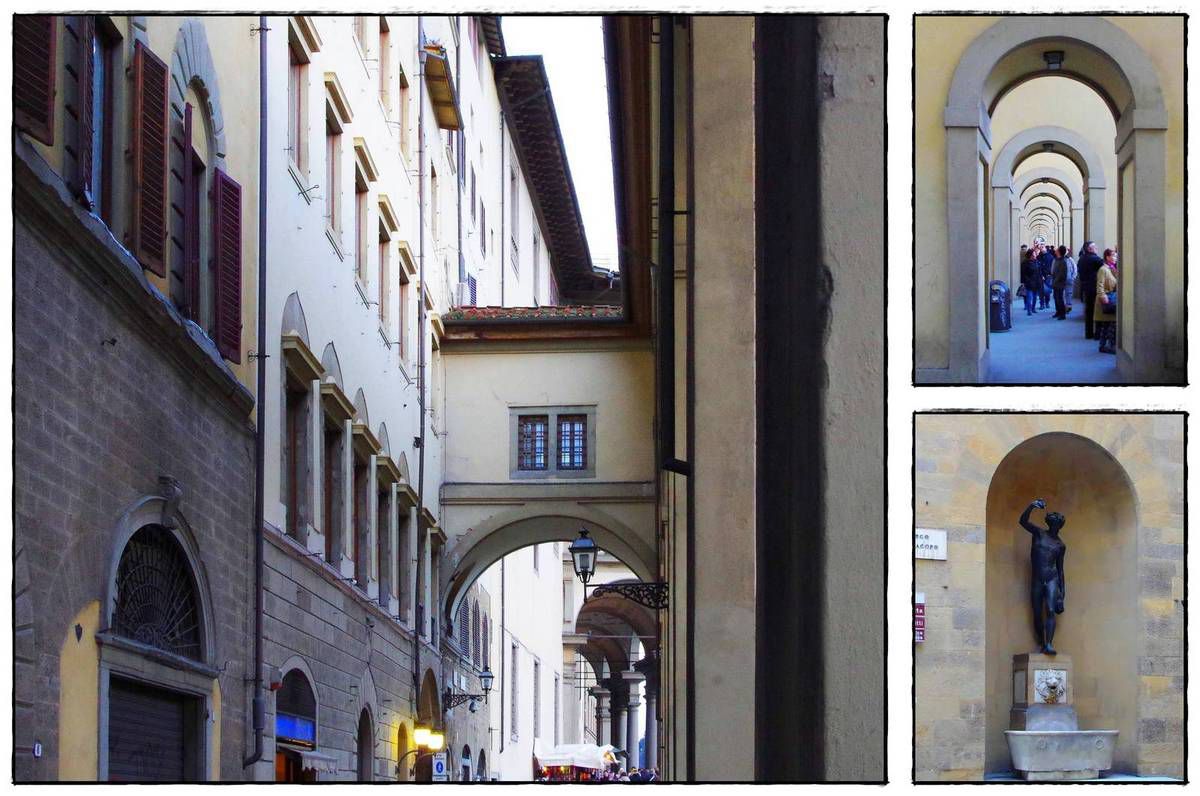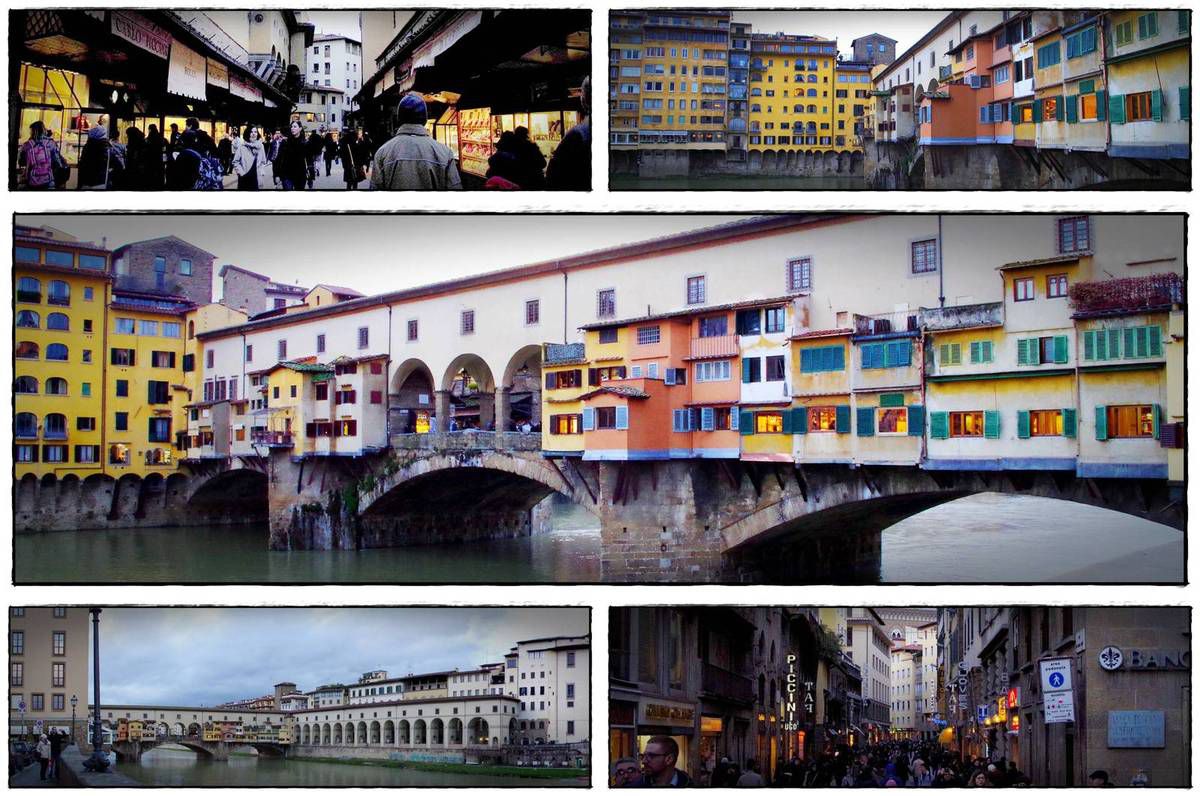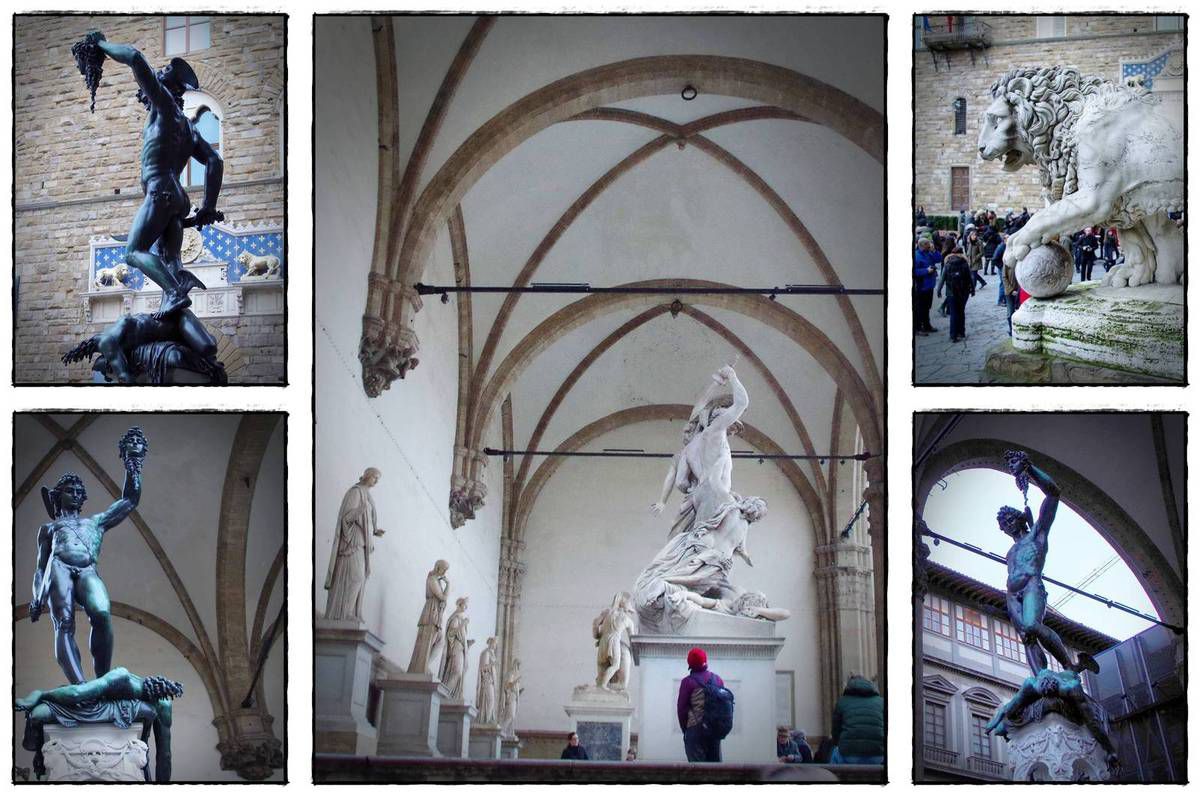Die Piazza della Signoria in Florenz ist einer der großen zentralen Plätze der Stadt und zugleich einer der berühmtesten Plätze Italiens. Zur Zeit der Republik war sie mit dem Palazzo Vecchio das politische und soziale Zentrum der Stadt.
Ausgrabungen ab 1974 haben gezeigt, dass die Gegend rund um die Piazza schon in der Jungsteinzeit bewohnt war. In der römischen Zeit war die Piazza della Signoria ein wichtiger Ort mit einem Theater, dessen Reste unter dem Palazzo Vecchio gefunden wurden. Ab dem 10. Jahrhundert wurde die Stadt umgestaltet, das vorher bestehende Stadtviertel wurde zugunsten der Piazza teilweise abgerissen.
Um das Jahr 1268 bekam der Platz seine heutige L-förmige Gestalt, als die Häuser der Ghibellinen von den siegreichen Guelfen zerstört wurden. Erst später erhielt der Platz eine einheitliche Gestaltung, 1385 wurde er gepflastert. Während die Piazza del Duomo das kirchliche und die heutige Piazza della Repubblica das wirtschaftliche Zentrum waren, bildete sich an der Piazza della Signoria der politische Mittelpunkt der Stadt. Im 14. Jahrhundert wurde die Loggia dei Lanzi für öffentliche Feiern und Empfänge errichtet. Auch das Tribunale della Mercanzia, ein Gericht für zivile und handelsrechtliche Streitigkeiten, wurde in dieser Zeit gebaut. Ab 1314 beherbergte der Palazzo Vecchio das Parlament.
Der Platz war auch der Ort für öffentliche Hinrichtungen, die bekannteste fand am 23. Mai 1498 statt, als Girolamo Savonarola wegen Ketzerei gehängt und verbrannt wurde. Heute erinnert ein im Boden eingelassenes Schild vor dem Neptunbrunnen an dieses Ereignis.
In den folgenden Jahrhunderten wurde am Platz baulich nicht viel verändert. Einige Monumente wurden aufgestellt, und die Loggia dei Lanzi wurde mit vielen Statuen in eine Art Freiluftmuseum umgewandelt.
Zwischen 1865 und 1895, als Florenz Hauptstadt von Italien war, fand das sogenannte Risanamento (Aufräumarbeiten) statt. Der Stadtkern musste den neuen Bedingungen angepasst werden, öffentliche und private Räume sollten mehr getrennt werden, es mussten neue Wohnungen errichtet werden, außerdem wollte man der neuen Hauptstadt ein modernes Gesicht geben. Die Veränderungen machten auch vor der Piazza della Signoria nicht Halt. Der Palazzo delle Assicurazioni vor dem Palazzo Vecchio wurde im Stil der Neorenaissance gebaut.
Archäologen haben Reste der Chiesa di Santa Cecilia und der Chiesa di San Romolo gefunden, beide Kirchen wurden während des Risanamento abgerissen.
(Quelle: https://de.wikipedia.org/wiki/Piazza_della_Signoria)
-
The Piazza della Signoria in Florence is one of the great central squares of the city and one of the most famous squares in Italy. Currently the Republic she was with the Palazzo Vecchio, the political and social center of the city.
Excavations since 1974 have shown that the area around the Piazza was already inhabited in the Neolithic period. In Roman times, the Piazza della Signoria was an important place with a theater, the remains of which were found under the Palazzo Vecchio. From the 10th century the city was remodeled, the pre-existing Neighborhood was in favor of Piazza partially demolished.
Around the year 1268 the place got its current L-shape, when the houses of Ghibellines were destroyed by the victorious Guelfs. Only later the place was given a uniform design, in 1385 he was paved. While the Piazza del Duomo were the Church and today's Piazza della Repubblica, the economic center, was formed at the Piazza della Signoria, the political center of the city. In the 14th century the Loggia dei Lanzi was built for public ceremonies and receptions. Also, the Tribunale della Mercanzia, a court for civil and commercial disputes, was built in this period. From 1314 the Palazzo Vecchio housed the Parliament.
The square was also the place for public executions, the most famous took place on 23 May 1498 as Girolamo Savonarola was hanged and burned for heresy. Today is built into the floor plate reminiscent of the Fountain of Neptune at this event.
In the following centuries not much has been changed in place structurally. Some monuments were erected, and the Loggia dei Lanzi was transformed into a sort of open-air museum with many statues.
Between 1865 and 1895, when Florence was capital of Italy, called Risanamento (cleanup) took place. The town center had to be adapted to the new conditions, public and private spaces should be more separated, it had to be built new homes, also wanted to give the new capital a modern face. The changes did not stop even before the Piazza della Signoria. The Palazzo delle Assicurazioni front of the Palazzo Vecchio was built in Neo-Renaissance style.
Archaeologists have found remains of the Chiesa di Santa Cecilia and the Chiesa di San Romolo, both churches were demolished during the Risanamento.
(Source: https://de.wikipedia.org/wiki/Piazza_della_Signoria)
-
La Piazza della Signoria en Florencia es una de las grandes plazas centrales de la ciudad y una de las plazas más famosas de Italia. Actualmente la República estaba con el Palazzo Vecchio, el centro político y social de la ciudad.
Las excavaciones desde 1974 han demostrado que el área alrededor de la plaza ya estaba habitada en el Neolítico. En la época romana, la Plaza de la Señoría era un lugar importante con un teatro, cuyos restos fueron encontrados bajo el Palazzo Vecchio. Desde el siglo 10 la ciudad fue remodelado, el Barrio preexistente estaba a favor de la Piazza parcialmente demolido.
Alrededor del año 1268 el lugar consiguió su actual forma de L, cuando las casas de gibelinos fueron destruidos por los güelfos victoriosos. Sólo más tarde el lugar se le dio un diseño uniforme, en 1385 le fue pavimentado. Mientras que la Piazza del Duomo eran la Iglesia y de hoy Plaza de la República, el centro económico, se formó en la Piazza della Signoria, el centro político de la ciudad. En el siglo 14 la Loggia dei Lanzi fue construido para las ceremonias públicas y recepciones. Además, el Tribunale della Mercanzia, un tribunal de conflictos civiles y mercantiles, se construyó en este período.En 1314, el Palazzo Vecchio albergó el Parlamento.
La plaza fue también el lugar para las ejecuciones públicas, la más famosa tuvo lugar el 23 de mayo 1498 como Girolamo Savonarola fue colgado y quemado por hereje.Hoy en día está integrada en la placa de piso que recuerda a la Fuente de Neptuno en este evento.
En los siglos siguientes no mucho ha cambiado en su lugar estructuralmente. Algunos monumentos fueron erigidos, y la Loggia dei Lanzi se transformó en una especie de museo al aire libre con muchas estatuas.
Entre 1865 y 1895, cuando Florencia era capital de Italia, llamado Risanamento (limpieza) se llevó a cabo. El centro de la ciudad tuvo que ser adaptado a las nuevas condiciones, espacios públicos y privados deberían estar más separados, que se tuvo que construir nuevas viviendas, también quería dar a la nueva capital de una cara moderna. Los cambios no se detuvieron incluso antes de la Piazza della Signoria. El frente Palazzo delle Assicurazioni del Palazzo Vecchio fue construido en estilo neorrenacentista.
Los arqueólogos han encontrado restos de la Iglesia de Santa Cecilia y la Iglesia de San Romolo, ambas iglesias fueron destruidas durante la Risanamento.
(Fuente: https://de.wikipedia.org/wiki/Piazza_della_Signoria)


















/idata%2F2273638%2FFotoserie-3%2F528a.jpg)
/idata%2F2273638%2F6--malerei%2Ftanz-des-Glucks.jpg)
/idata%2F2273638%2FFotoserie-2%2F345adventkalender--4-.jpg)
/idata%2F2273638%2F5--malerei%2F340.jpg)
/idata%2F2273638%2FFotoserie%2F-196-196.jpg)
/idata%2F2273638%2F4--malerei%2F186-an-der-wand.jpg)
/idata%2F2273638%2FKunst-am-Turm-2012%2FP6240434_stitchkl.jpg)
/idata%2F2273638%2FFotokollagen%2F2.jpg)
/idata%2F2273638%2Fkompositionen%2FBetakampffisch.jpg)